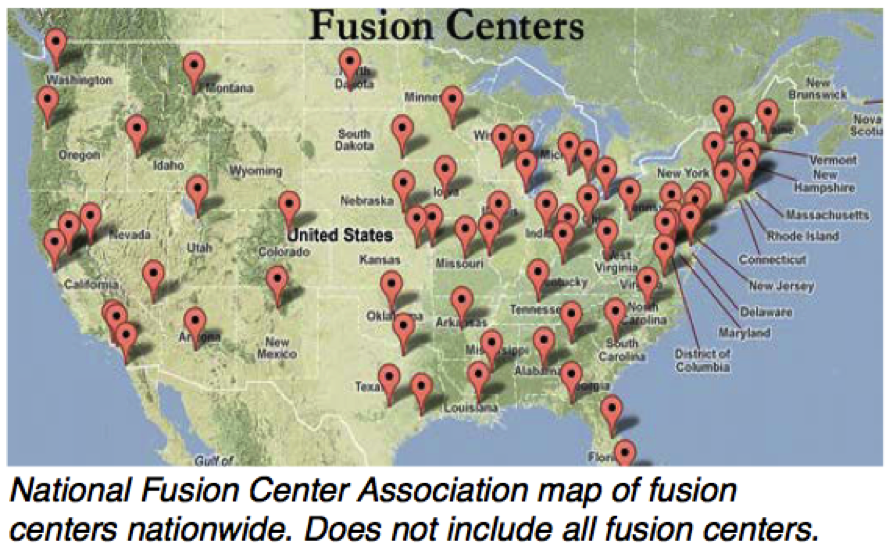A student Note written by fellow Cornell Law student Greg Mina and myself, titled
Clowning Around with Final Agency Action, was recently selected by the Cornell Journal of Law and Public Policy for publication. The Note attempts to draw attention to the tightening of final agency action requirements in several federal circuits.
One issue that my co-author and I wish we could have discussed in more detail is the rise of so-called “
fusion centers.” One major criticism of the national security infrastructure following the 9/11 attacks was that government agencies were too insulated from one another
. In the lead up to the attacks, federal agencies failed to aggregate their information and coordinate their efforts. Congress responded with several pieces of legislation that established fusion centers, and federal law enforcement implored states to establish their own fusion centers. At the federal level, the centers were sub-agencies tasked with aggregating information in the areas of national security, criminal justice, and immigration.
These centers would then share their aggregated reports with federal agencies, state fusion centers, and local law enforcement.
While the main utility of fusion centers at their inception was avoiding future terrorist attacks, they quickly transformed into tools of local policing. One of their primary purposes is now to provide the national infrastructure required for gang designations. Gang designations have resulted in what might be thought of as “upstream” and “downstream” effects.
Upstream, at the federal level, gang designations from agencies like the National Gang Intelligence Center have the effect of
stigmatizing different groups.
Downstream, as those groups become stigmatized, state and local governments use gang designations to issue gang injunctions (tools used to restrict what individuals can do in public areas) or deportation orders against suspected gang members. Other
consequences of being designated as a gang member are an “increased probability of criminal conviction, sentence enhancements, loss of employment, and eviction from public housing.”
Fusion centers, and specifically the practice of designating suspected gang members, have come under increased scrutiny. Some have argued that fusion centers violate individuals’ rights by imposing gang designations without
due process. This argument is connected to concerns over accuracy. One
audit found that California’s system for tracking suspected gang members was riddled with inaccuracies. The system had no oversight from the state, had no evidence to support the designations of 23 percent of the individuals in the system, and failed to “purge” individuals whose designations had lapsed. A separate concern is that gang databases will have a
disproportionate impact on people of color. This concern is amplified by the subjective nature of gang assessments, which often
employ subjective criteria.
As I learned more about fusion centers, gang databases, and the litigation efforts that might be used to mitigate their corrosive effects, I increasingly was drawn to the use of administrative law. Fusion centers, which provide much of the national infrastructure for gang designation and targeting, are administrative bodies
subject to litigation under the Administrative Procedure Act (“APA”). Litigating under the APA offers several distinct advantages. Without the APA, civil rights litigators would be forced to litigate individual instances of enforcement. Because of different immunity doctrines, these lawsuits would be duplicitous, costly, and would fail to make the government internalize the costs of its actions. A lawsuit arguing that a gang designation is
arbitrary and capricious could force the federal government to internalize the costs of that designation. Under the APA, the
immunity concerns vanish and you can sue the agency directly. Because litigating under the APA would require fewer duplicitous suits, this strategy could save the resources of civil rights organizations who wish to challenge fusion centers’ designations.
An administrative law approach to solving this criminal justice and civil rights issue faces a unique challenge. Bringing an APA suit against the National Gang Intelligence Center,
several recent litigants were forced out of court by the final agency action requirement of the APA. As discussed in our forthcoming Note, the
Fourth and
Sixth Circuits have adopted a rigid rule that effectively insulates fusion centers from litigation. It makes strictly
direct injuries a prerequisite for judicial review of agency actions. While fusion centers’ gang designations are an underlying cause of the claimants’ injuries, the designations are not the direct cause (the enforcement of gang laws is the direct cause, and enforcement is usually left to police or federal law enforcement). Thus, even if plaintiffs are found to have standing against fusion centers, the federal courts are without jurisdiction to review their claims.
This rigid rule has the perverse effect of making litigants sue the federal and local law enforcement charged with enforcing fusion centers’ reports directly—a requirement that makes holding government actors accountable costly if not impossible.
But civil rights lawyers and criminal justice reformers still have several options available to them. While
other circuits have adopted final agency action rules that are stricter than the Supreme Court’s standard from
Bennett v. Spear, the Sixth Circuit was the first to adopt the Fourth Circuit’s rigid analysis. The D.C. Circuit, for instance, has adopted a
strong rule against the finality of agency interpretive rules and statements of policy. But gang designations and the work of the National Gang Intelligence Center do not fall neatly in those boxes. Outside of the Fourth and Sixth Circuits, courts have significantly greater leeway to exercise jurisdiction over fusion centers (assuming, of course, that the standing requirements are met).
Because case-by-case litigation against local law enforcement would be costly and would do little to affect that national infrastructure that allows for gang designations, civil rights lawyers and criminal justice reformers should attempt to bring suits against fusion centers outside of the Fourth and Sixth Circuits. The gang designation issue offers a rare opportunity to use administrative law to effectuate change in the criminal justice system.
Suggested citation: Beau Baumann
, An Administrative Law Approach to Criminal Justice Reform, Cornell J.L. & Pub. Pol’y, The Issue Spotter, (Sept. 10, 2018), https://live-journal-of-law-and-public-policy.pantheonsite.io/an-administrative-law-approach-to-criminal-justice-reform/.


